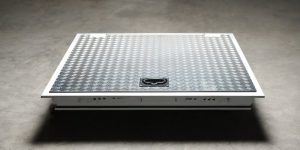 The case of MPP Technologies Private Limited vs M/s. Matrix Architectural Solutions & Anr. centred on allegations of trademark infringement and passing off by the defendants, who were accused of unauthorised use of the plaintiff’s registered trademarks, including “MPP,” “System Schroders,” “Thelesol,” “Theresol,” and “System Schroders Turen+Tore.”
The case of MPP Technologies Private Limited vs M/s. Matrix Architectural Solutions & Anr. centred on allegations of trademark infringement and passing off by the defendants, who were accused of unauthorised use of the plaintiff’s registered trademarks, including “MPP,” “System Schroders,” “Thelesol,” “Theresol,” and “System Schroders Turen+Tore.”
The plaintiff, MPP Technologies Private Limited, a manufacturer of specialised panels and enclosures, claimed exclusive rights to these marks through registration and licensing agreements. The defendants, Matrix Architectural Solutions and Growthwell Consulting Private Limited, were alleged to have used these marks on their website without authorisation, leading to the lawsuit.
The plaintiff’s case was built on several foundational arguments. First, it asserted ownership of the trademark “MPP” through registration certificates (Ex. P3 and Ex. P13), which confirmed the mark’s validity until 2025. Second, it claimed exclusive rights to use the “System Schroders” trademark under a licensing agreement with Theo Schroder, though the agreement’s validity was contested due to its lapse in 2016 (Ex. P5 and Ex. P10). Third, the plaintiff alleged that the defendants had used the “MPP” and “System Schroders” marks on their website (Ex. P7) even after their business relationship had soured, which the plaintiff argued constituted infringement and passing off. The business relationship between the parties deteriorated in 2016, leading to a separate suit for recovery of dues (O.S. No. 7053/2016), which further complicated the dispute.
The defendants, in their written statement, admitted to using the plaintiff’s marks on their website but argued that this was a standard industry practice during their business association. They contended that the marks were used to indicate their role as a business agent for the plaintiff and were removed immediately after the dispute arose. The defendants denied any intent to infringe or pass off their goods as those of the plaintiff, emphasising that their use of the marks was neither identical nor deceptive. They also highlighted that the plaintiff had similarly used the defendants’ branding on its website, suggesting mutual consent in the past.
The court framed five key issues, focusing on the plaintiff’s ownership of the trademarks, the validity of its licensing agreements, and whether the defendants’ actions constituted infringement or passing off. On the first issue, the court affirmed the plaintiff’s ownership of the device mark “MPP Technologies Private Limited” and “System Schroders” based on the registration certificates (Ex.P3, Ex.P4, Ex.P13, and Ex.P14). However, it clarified that the plaintiff’s rights were limited to the device marks and not the standalone word marks “MPP” or “System Schroders.”
Regarding the second issue, the court found that the plaintiff failed to prove its exclusive rights to the marks “Thelesol,” “Theresol,” and “System Schroders Turen+Tore” due to the expired licensing agreement (Ex. P5 and Ex. P10). The renewal document (Ex. P10) lacked clarity on the parties involved and the scope of the license, rendering it insufficient to establish ongoing rights.
On the critical third issue of whether the defendants infringed or passed off the plaintiff’s trademarks, the court ruled in favour of the defendants. It noted that the defendants’ use of the marks was limited to their website under the heading “Brands we deal in,” which indicated a business relationship rather than an attempt to mislead consumers. The court emphasised that the defendants had removed the marks promptly after the dispute arose, as admitted by the plaintiff’s witness (PW.1) during cross-examination.
Furthermore, the court observed that the plaintiff had also used the defendants’ branding on its website, undermining its claim of exclusive control over the marks. The absence of deceptive similarity or intent to confuse consumers weighed heavily in the defendants’ favour. The court dismissed the plaintiff’s claim for a permanent injunction, concluding that the defendants’ actions did not meet the legal threshold for infringement or passing off. It highlighted that the plaintiff’s case was weakened by its failure to specify the device marks in its prayer and its inability to prove ongoing licensing rights. The court also noted the timing of the suit, which followed the defendants’ counterclaim in the recovery suit, suggesting a retaliatory motive.
In its final analysis, the court referenced several legal precedents but found them inapplicable due to the distinct factual matrix of the case. The dismissal of the suit with costs reinforced the principle that trademark claims must be substantiated with clear evidence of unauthorised use and consumer confusion.
This judgment clarifies that the context of trademark use, such as indicating a past or ongoing business association, can negate claims of infringement, provided there is no intent to deceive. The ruling also highlights the importance of precise pleadings and robust evidence in intellectual property litigation, particularly when licensing agreements and mutual business practices are involved. By prioritising factual context over technical claims, the court delivered a balanced verdict that safeguards both trademark rights and legitimate business practices.



